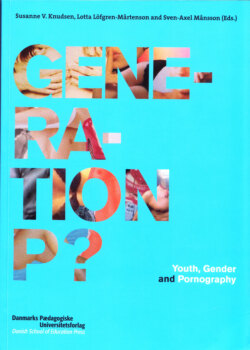Читать книгу Generation P? - Группа авторов - Страница 5
На сайте Литреса книга снята с продажи.
A process of normalisation
ОглавлениеThe implications of the almost unbounded accessibility of pornography on the Internet have been discussed by among others the Swedish researchers Sven-Axel Månsson and Peder Söderlind (Månsson & Söderlind 2004). They argue that these changes should be perceived as part of a process of normalization. Simply put, as greater numbers of people consume pornography, it becomes more normal to do so. Among today’s young people this process is particularly evident. How can something that is so easily accessible be so emotionally and morally charged, so dangerous, so wrong? As will be seen in the succeeding chapters of this anthology, many of the young people who have been interviewed by the different authors recognize that there has been a change in the general attitudes to pornography. Nowadays, looking at porn is no longer regarded as something shameful, but rather is considered to be acceptable and fairly normal. However, this is not the same thing as saying that one likes what one sees, or that one is not critical of what goes on in the media and in popular culture. To the contrary, as will be made clear in several chapters in this book, this also implies some interesting gender differences.
Clearly, the public debate about pornography does not revolve only around the degree of exposure and accessibility. It also concerns content, i.e. what is being shown in pornography and how it relates to love and sexuality, gender, bodily ideals and images, and to sexual desire and power. In short, what are the human, social and gender-political meanings and implications of pornography? These are questions and issues that the public and academic debate has dealt with for a long time, to be precise since the early 1980’s, and they are still reflected in the concerns that permeate the public discourse of today (Löfgren-Mårtenson & Månsson 2006a). To what extent do these debates and discussions affect young people’s attitudes to pornography today? This brings us to some of the main questions of this anthology: How do young people navigate through the pornographic landscape that surrounds them? Does this omnipresence of pornography breed curiosity or resistance? How is one affected by talk, opinions and attitudes concerning pornography in public space? And how are the pornographic references and representations, mediated by popular culture, perceived in relation to the sometimes more restrictive and critical view of pornography supplied by parents, teachers, public debaters, and critical friends?
